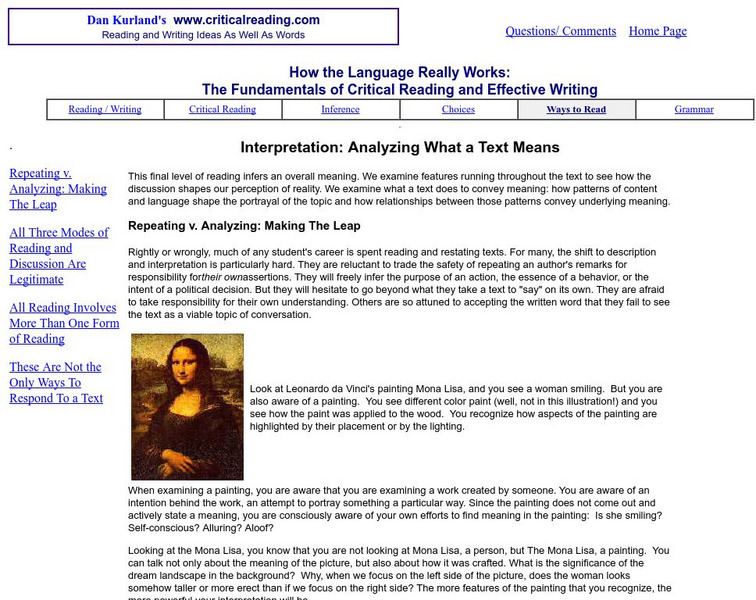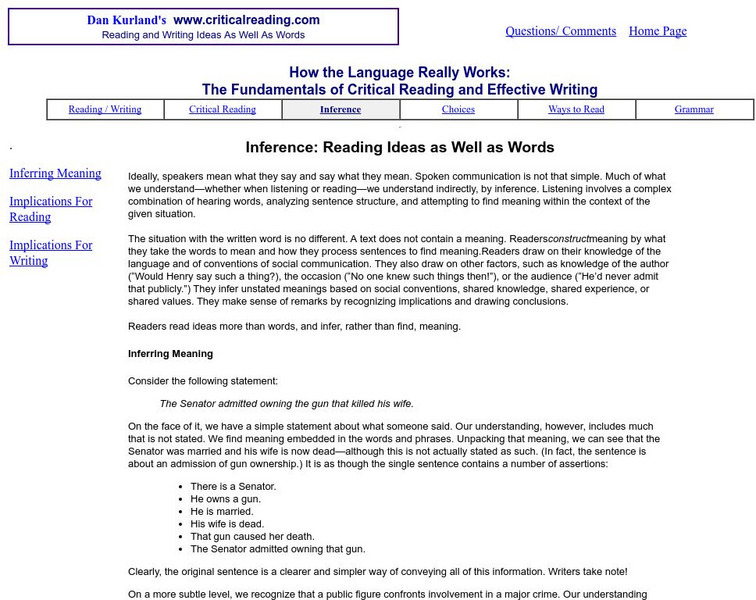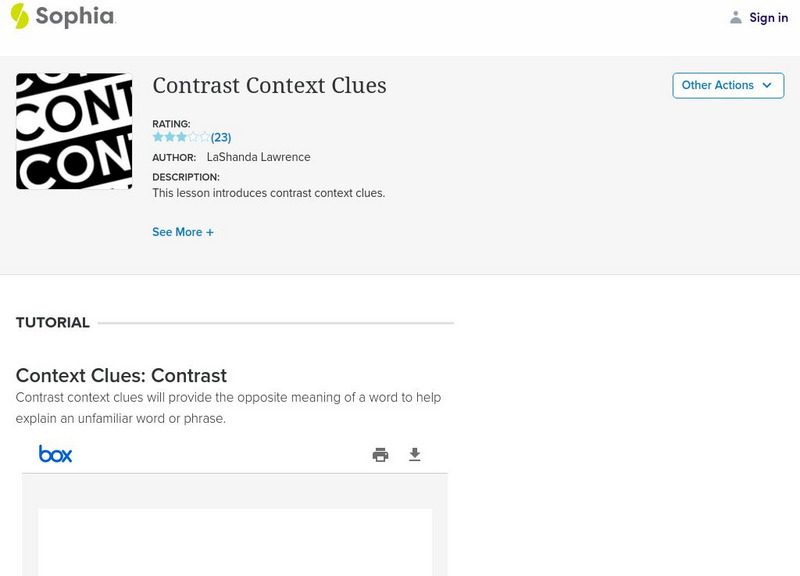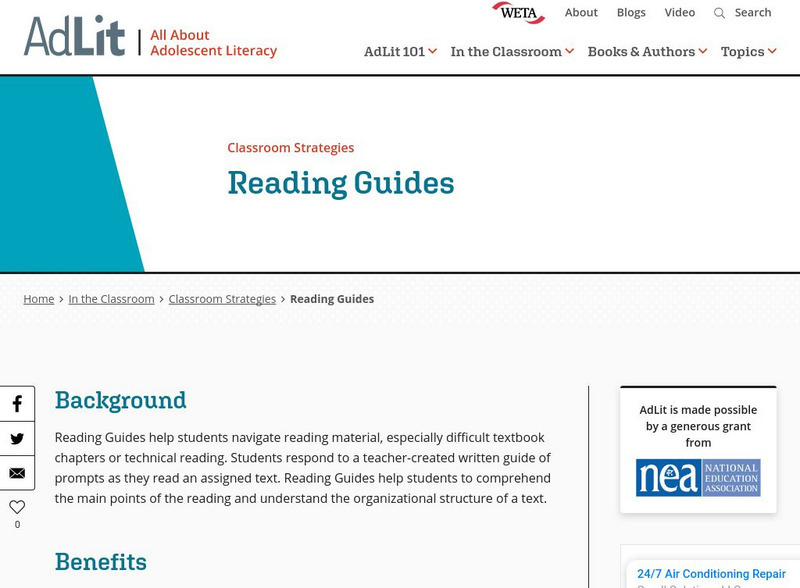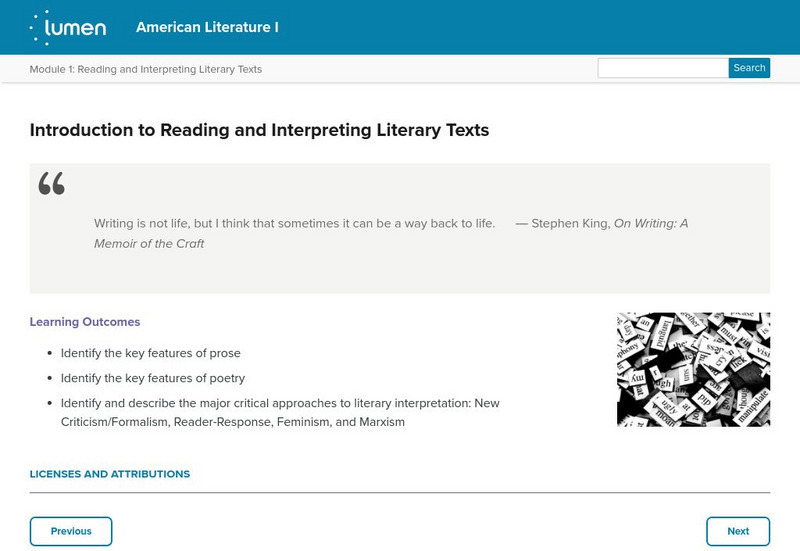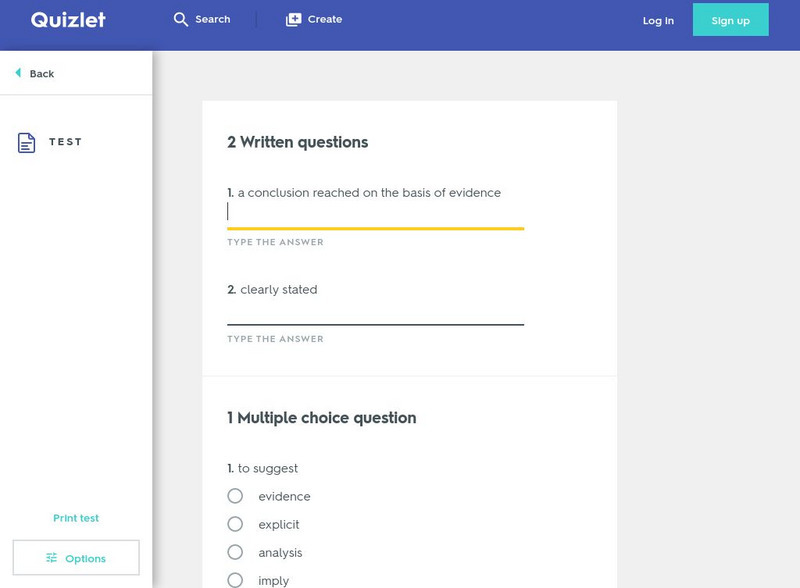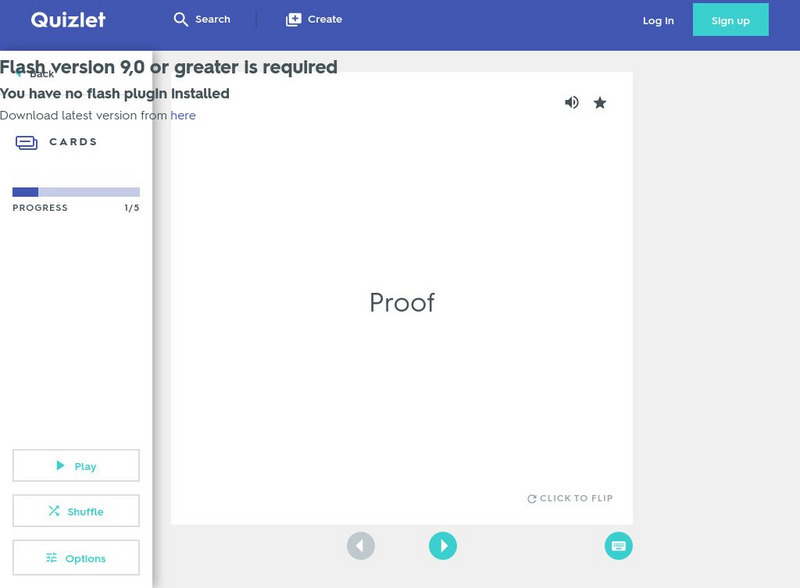AdLit
Ad lit.org: Literacy Instruction in the Content Areas: The Core of Improvement
Every content area, from chemistry to history, has unique literacy demands: texts, knowledge, skills. But how are these critical literacies learned, let alone taught?
Other
Noodle Tools: Basic Language Literacy: Writing: Paragraph Art
When you create a coherent paragraph, it can be represented by any number of visual images. This page shows examples of how that might work to help writers understand the idea of coherence.
Other
How the Language Really Works: Restatement
Choosing when to read for simple comprehension is the focus of this brief article.
Other
Critical Reading: How the Language Really Works: Interpretation
In this brief article, the author considers the ways that readers interpret text. An interesting comparison between reading and viewing a painting is worth a look.
Other
Gallaudet University: Reading and Mapping
Learn strategies for reading and mapping. This link offers important tips on improving test taking skills. Includes a PDF (requires Adobe Reader).
Other
Strategies for Reading Comprehension:reciprocal Teaching
Use this page to understand the reciprocal teaching strategy that includes the role of the clarifier in student groups.
Other
Daniel J. Kurland: Critical Reading: Inference: Reading Ideas as Well as Words
This college instructor offers his insights into critical reading and how to develop skills to interpret as well as comprehend the written word. RL.9-10.1, RL.11-12.1, RI.9-10.1 textual evidence and inference.
TES Global
Blendspace: The Roaring 20's
A learning module with thirteen links to texts, images, and videos, with information about life during the 1920's. RI.9-10.7 different mediums
Other
Laflemm.com: Reading Resources: Inference
This page has reading tips and exercises that explain inferences. There is an answer key for students to check their work. RL.9-10.1, RL.11-12.1, RI.9-10.1 & RL.11-12.1 textual evidence and inferences
Other
Critical Reading: Three Ways to Read and Discuss Texts
Designed to help students think about their reading and writing skills, this page offers three different ways to interpret and discuss texts.
AdLit
Ad lit.org: Classroom Strategies: Reading Guides
Reading Guides help students navigate reading material, especially difficult textbook chapters or technical reading. Students respond to a teacher-created written guide of prompts as they read an assigned text. Reading Guides help...
AdLit
Ad lit.org: Direct, Explicit Comprehension Strategy Instruction
Comprehension strategies are routines and procedures that readers use to help them make sense of texts. Struggling adolescent readers need direct, explicit instruction in comprehension strategies to improve their reading comprehension.
Lumen Learning
Lumen: Introduction to Reading and Interpreting Literary Texts
This introduction to reading and analyzing text features a list of learning objectives for analyzing prose and poetry, and an understanding of critical approaches to literary interpretation.
Quizlet
Quizlet: 8th Grade Evidence/inference Test
Reading strategy terms are included on this vocabulary test. This test assesses the following words: analysis, evidence, explicit, imply, and inferences. Five multiple choice questions are provided on this assessment.
Quizlet
Quizlet: Flashcards 8th Grade Evidence/inference
This set of interactive flashcards focuses on terms having to do with evidence and inference-related definitions. These terms include the following: evidence, analysis, inferences, explicit, and imply.
Other
Prezi: What Is Complex Literature?
This Prezi was created by Marko Zlomislic. The presentation explains what constitutes complex literature. It defines complex texts, discusses the varied benefits of learning to read them, and provides links to lesson plans and examples....
Khan Academy
Khan Academy: Match Principles Quick Guide
These types of questions are very similar to match structure questions, in that the stimulus is made up of an argument or situation, and each choice represents an argument or situation. Your job is to find the choice that exhibits the...





